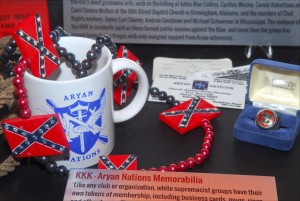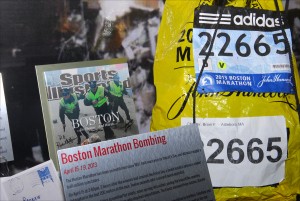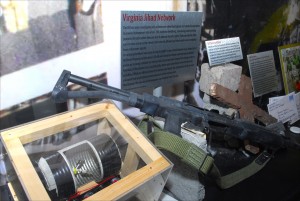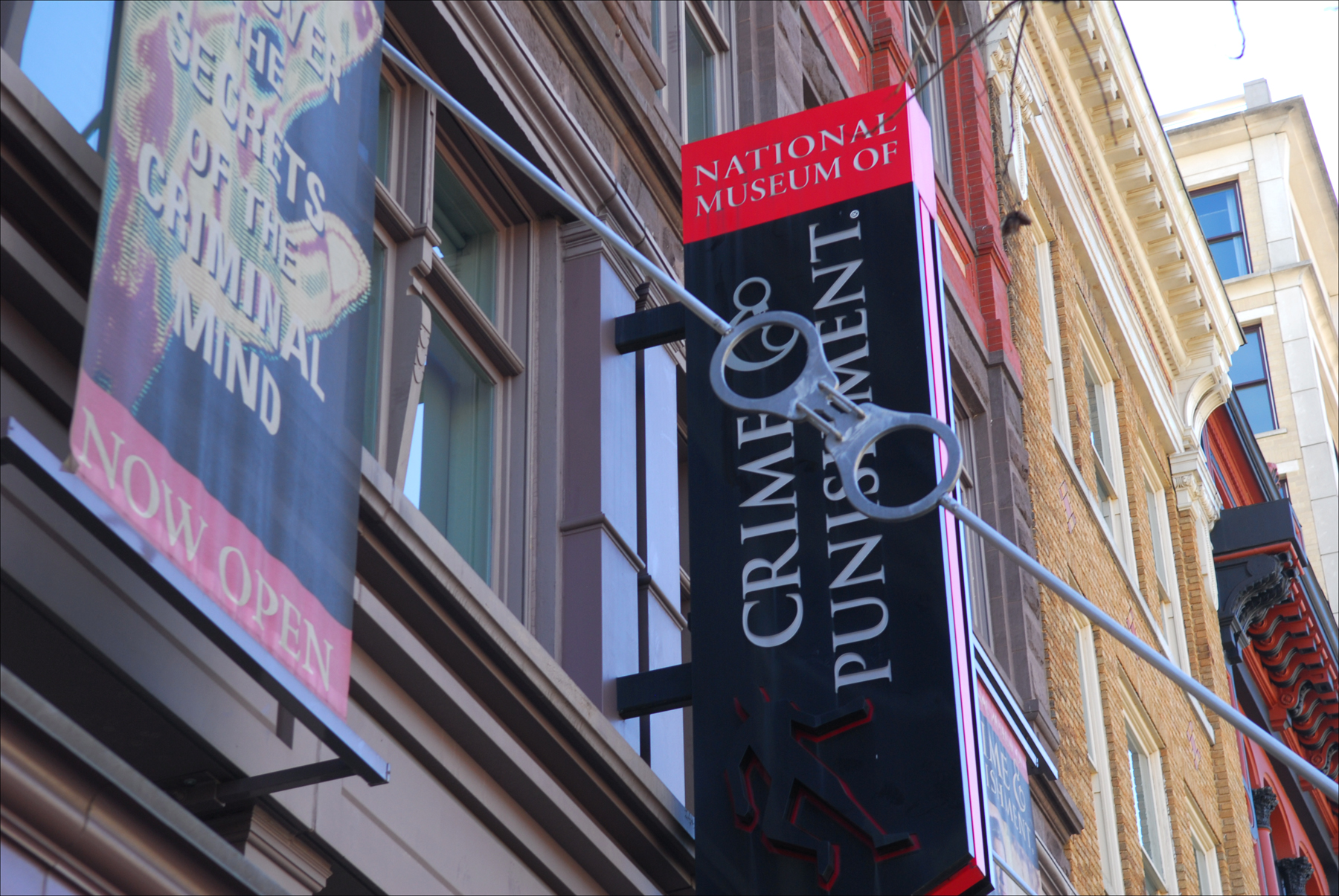National Museum of Crime & Punishment opens exhibit on domestic terrorism
The National Museum of Crime & Punishment in Washington DC has just opened a permanent exhibit on domestic terrorism and hate crimes. (Larry Luxner)
WASHINGTON — A runner’s bib from the ill-fated 2013 Boston Marathon. Key chains glorifying the Ku Klux Klan. A high-powered rifle confiscated during a 2005 raid on the so-called Virginia Jihad Network. Rubble from the ruins of New York’s World Trade Center.
These reminders of recent history are not meant to elicit joy or happiness, but rather introspection and perhaps anger that such things could happen right here, on American soil. Along with dozens of other artifacts, they comprise a newly unveiled exhibit at the National Museum of Crime & Punishment on domestic terrorism and hate crimes.
Janine Vaccarello, the facility’s chief operating officer, said the permanent exhibit — inaugurated March 18 — fills a void that has existed ever she opened the popular D.C. tourist attraction in May 2008.
“About two years ago, I met with the FBI because we didn’t have terrorism covered in the museum. We started brainstorming on what we could do,” Vaccarello told Baltimore Post-Examiner during our visit last week to the 28,000-square-foot emporium of crime and punishment. “Hate crimes are considered part of domestic terrorism, so it was a natural fit. But with so much going on and so many topics that we see in the daily news, I knew I needed to hurry up.”

Some of the souvenirs on display are deeply disturbing.
For example, in one glass case is the noose used in an early 20th-century lynching, next to a panel that describes how James Byrd. Jr., a black man from Jasper, Texas, was tethered to the back of a pickup truck and dragged nearly two miles to his death by three white supremacists.
That same year, Matthew Shepard, a gay political science major at the University of Wyoming, was brutally beaten by two homophobes, tied to a fence and left to die. These back-to-back crimes — which horrified the nation — led to passage of the Matthew Shepard and James Byrd Jr. Hate Crimes Prevention Act, signed into law by President Obama in 2009.

“Both of these men died in 1998,” Vaccarello said. “Most people remember the stories, but they don’t remember how gruesome their deaths were.”
The inclusion of 9/11 rubble in an exhibit on domestic terrorism was a no-brainer, even though al-Qaeda extremists from Saudi Arabia committed the attack, she told us, “because it happened on American soil, and people wouldn’t understand why we wouldn’t include it.”
Islamic fanaticism also was behind the 2013 Boston attack, in which two pressure-cooker bombs exploding 12 seconds apart killed three bystanders and injured more than 160, in the worst act of terrorism on U.S. soil since 9/11. Dzhokar Tsarnaev, the 19-year-old Muslim Chechen charged in the bombing, is reported to have been inspired by al-Qaeda.
“I walk by people as they’re reading the panels, and the most surprising thing for them is to see that we’ve included the Boston Marathon bombing, since that trial is going on right now,” said Vaccarello. “It’s definitely delivering the message we wanted, which was that people leave that area with a heavy heart, reminiscing where they were when certain events took place.”

Underlining the importance of this especially vile attack, authors Casey Sherman and Dave Wedge, co-authors of the New York Times bestseller Boston Strong, spoke at the exhibit’s opening. Their book is the first to tell the whole story through the eyes of those who lived it.
Next to the Boston Marathon display is the Romak rifle confiscated by the FBI from the so-called Virginia Jihad Network in 2005, after that group’s failed attempt to train assassins at a paintball war games facility in Spotsylvania County. Eleven men were ultimately charged in a conspiracy that stretched from suburban northern Virginia to the mountains of Pakistan.
Other artifacts on display: a replica of the Unabomber’s jerry-rigged explosive which was placed on American Airlines Flight 444 from Chicago to Washington back in 1979, but which failed to detonate; facsimiles of anthrax-filled envelopes mailed to lawmakers in the wake of 9/11, prompting massive evacuations and lockdowns; a ceremonial robe belonging to a leading Klansman, and the gun used in an August 2012 attack by a gay man against the politically conservative Family Research Council.

Vaccarello said she included that weapon in the exhibit because the FBI classified the incident in which it was used as a hate crime. The nonprofit group, which opposes same-sex marriage, is based in Washington’s Chinatown, just a few blocks from the museum.
But a similar attack by an 89-year-old neo-Nazi against the U.S. Holocaust Museum — also in Washington — wasn’t included because no artifacts were available.
Nor was the gun used to murder Edward Tiller, a Kansas doctor who performed late-term abortions — an omission that Vaccarello admits has generated more than a few nasty emails.
“Nobody wants to look at an exhibit if there’s nothing to see,” she said. “The FBI likes working with us because they know that if they loan us an item, there will be more visibility on that case. One of the FBI’s goals is not only to investigate crimes, but also prevent them from happening. And that is our ultimate vision of why we would have a museum like this.”
In June, the Crime Museum will inaugurate a temporary exhibit on wildlife trafficking, particularly as it affects elephants, tigers and sea turtles.
The museum, which is privately owned by a Florida-based investor group, doesn’t give out statistics on visitor numbers. It’s also one of the few D.C. museums that isn’t free; admission costs $18 for adults, $14 for children and $16 for police officers, military personnel and seniors. For more information, visit the The National Museum of Crime & Punishment or call (202) 393-1099.

Larry Luxner is a freelance writer with The Washington Diplomat and former editor of CubaNews. Born and raised in Miami and now based in Israel, Larry has reported from every country in the Western Hemisphere. His specialty is Latin America and the Middle East, and he’s written more than 2,000 articles for publications ranging from National Journal to Saudi Aramco World. Larry also runs an Internet-based stock photo agency at www.luxner.com.

